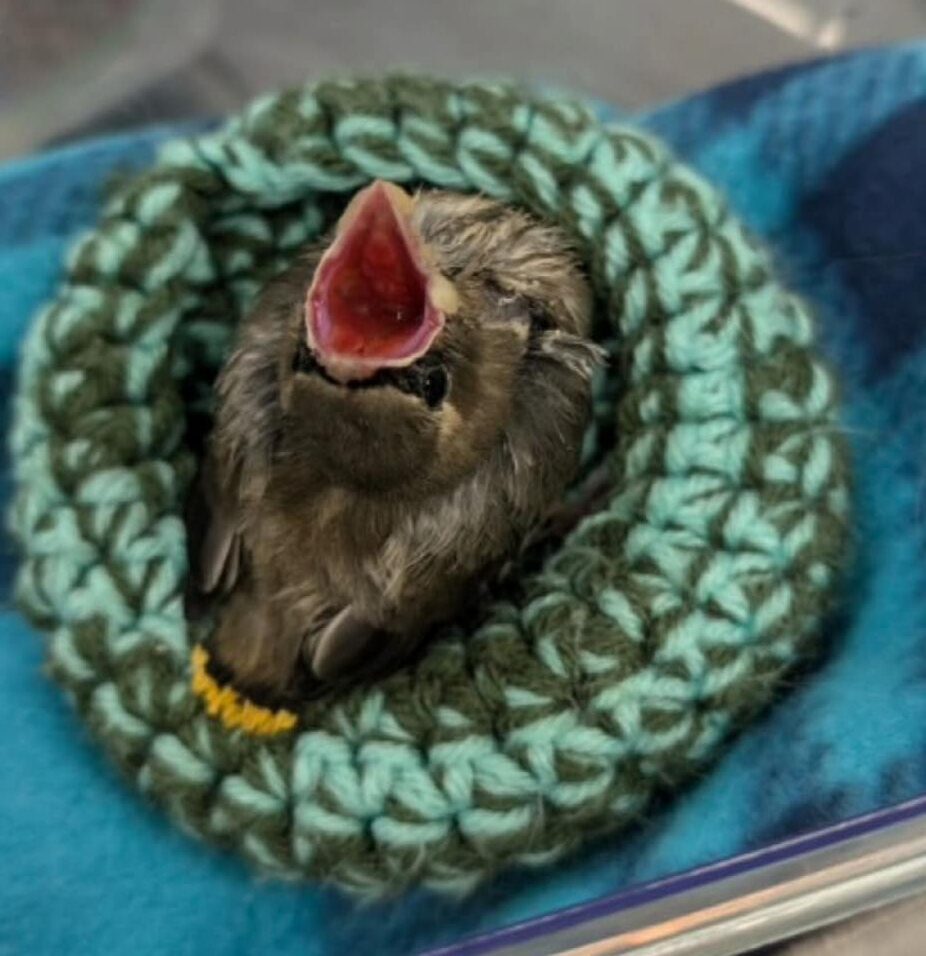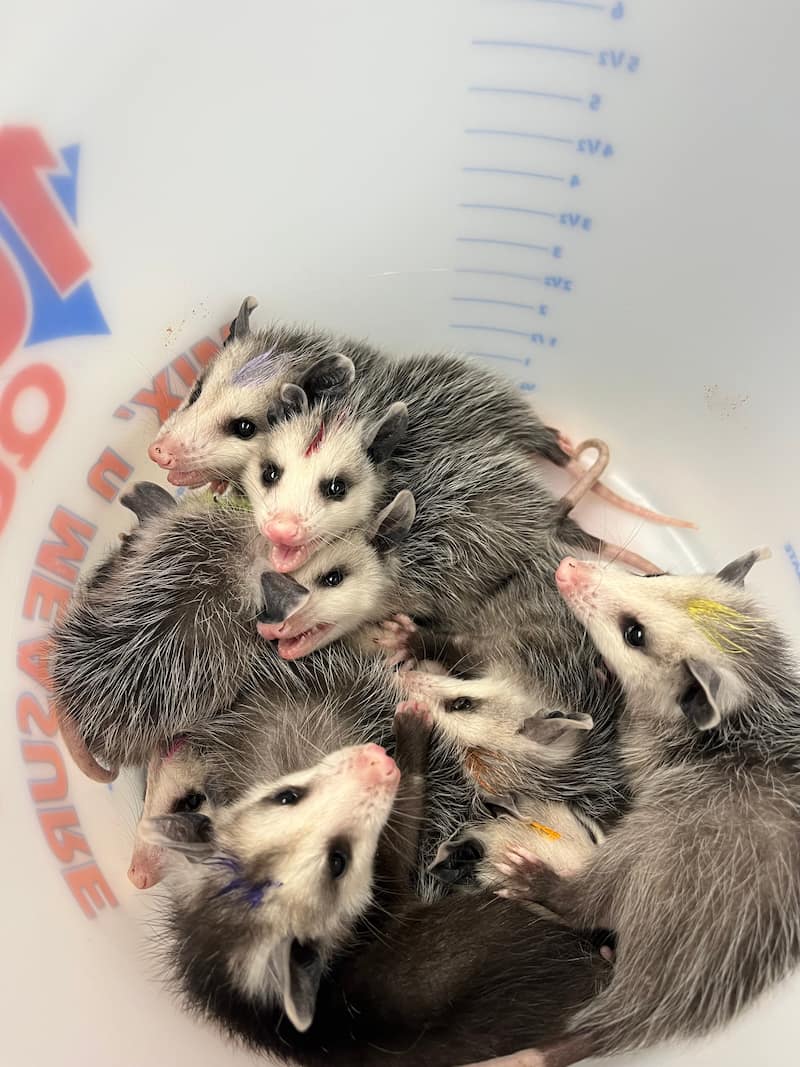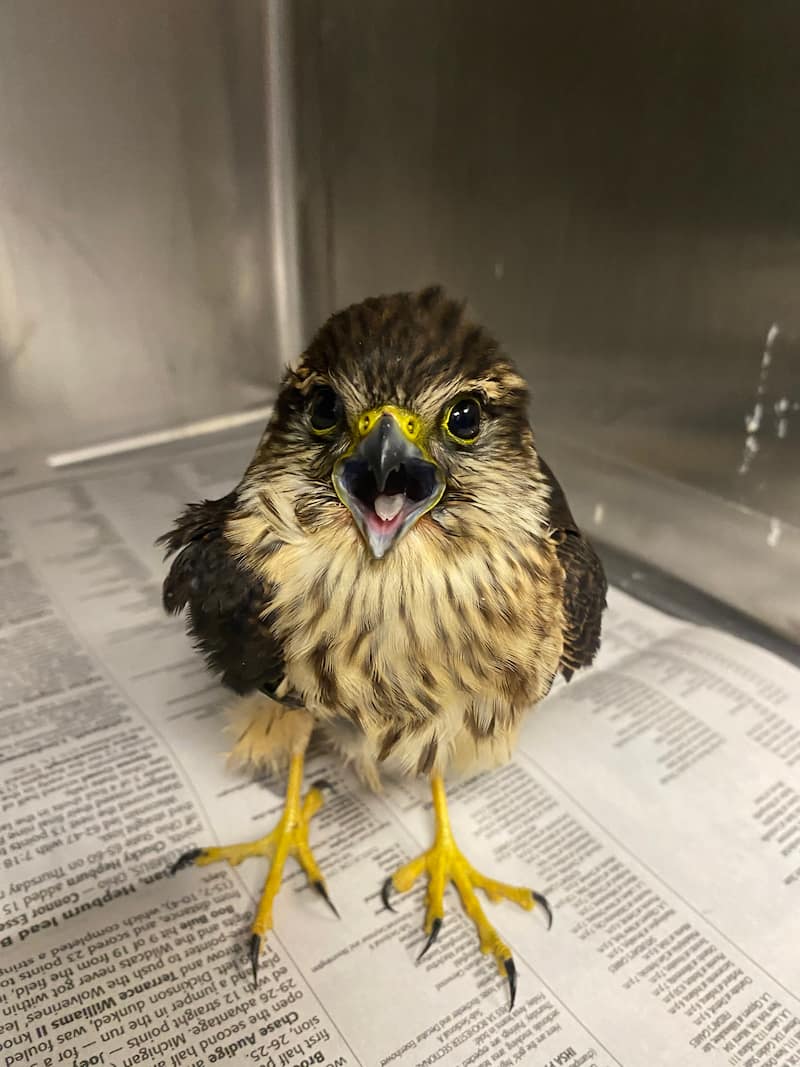by Allie Urbanik (vm17)
One day an eastern box turtle was presented to the Wildlife Medical Clinic after being hit by a car. On examination, the most evident and pressing issue was a large carapacial fracture. The fracture involved multiple parts of the caudal carapace, and it was not evident on examination whether lung fields were exposed. Due to the potentially complicated nature of this fracture, radiographs were taken. The radiographs showed possible lung consolidation, suggesting lung exposure or infection. Our next step after taking radiographs was to fix the most glaring problem: the shell fracture.
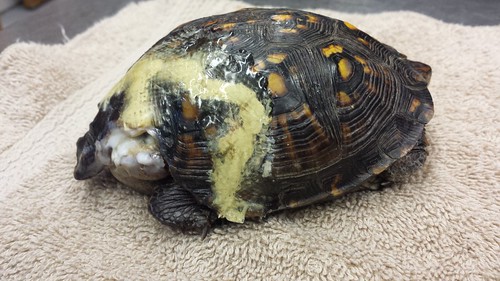
A shell fracture can be repaired one of several ways. A very common approach is to drill small screws into the shell on either side of the fracture and then wrap wire around the screws, tightening the shell down almost like opposing tissue during suturing. Another approach, and the one taken with our patient, was to epoxy the shell. Layers of epoxy material can be applied to the shell over the cracks as a sealant of sorts. Over time, the bone of the shell will heal. The trauma of the car accident combined with the shell repair necessitated that our patient received medication to control pain and fluids.
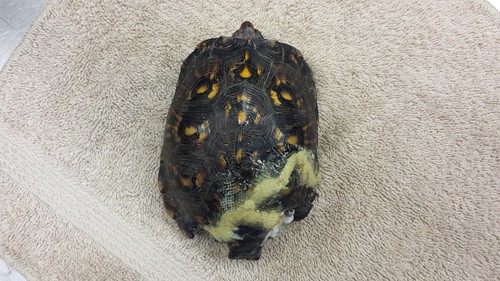
After our turtle shell repair, we turned our attention to the fact that our patient had refused to eat since arriving. The stress of handling and captivity, not to mention the trauma of being hit by a car, can cause our patients to lose their appetites. Additionally, inflammation and infection can also cause patients to lose their appetite. Of course, nutrition is vital to the healing process, so getting our little guy fed is of the utmost importance. At this moment we are at a cross roads of sorts. We have just recently been successful at force feeding our patient mealworms and fruits, but it may be necessary to place an esophagostomy tube if our patient stops eating or seems too stressed by the handling. Additionally, at this time of the year, turtles would be preparing themselves for winter hibernation.
With our patient’s shell fracture, releasing her now so that she could overwinter is not an option. As such, she will be a long-term patient in the clinic. Hopefully, we have crossed our most difficult challenges with this patient. We expect a full recovery of the affected shell. The prognosis is excellent. I am constantly astounded by the tenacity and healing ability of our patients. I have no doubts that our little turtle will make a full recovery, and I look forward to releasing her in the spring.

